Web platform
The C-ITS platform is a multi-purpose web platform that allows the configuration, maintenance, supervision and operation of ITS stations deployed in the field. In addition, it allows the centralisation of ITS information used for the provision of different use cases.
We offer the C-ITS platform in the form of “licences”, each corresponding to one or more functionalities.
Base
The basic licence includes all the features needed to use the platform, such as:
- User management : Each person accessing the web platform has their own rights, allowing for detailed and personalised access management.
- Corrective and evolutionary updates : Each installation of the C-ITS platform is regularly updated with new features. It is a constantly evolving system.
- Email alerts : The platform automatically sends email alerts in the event of an issue to maintain a high level of service.
V2X stations management
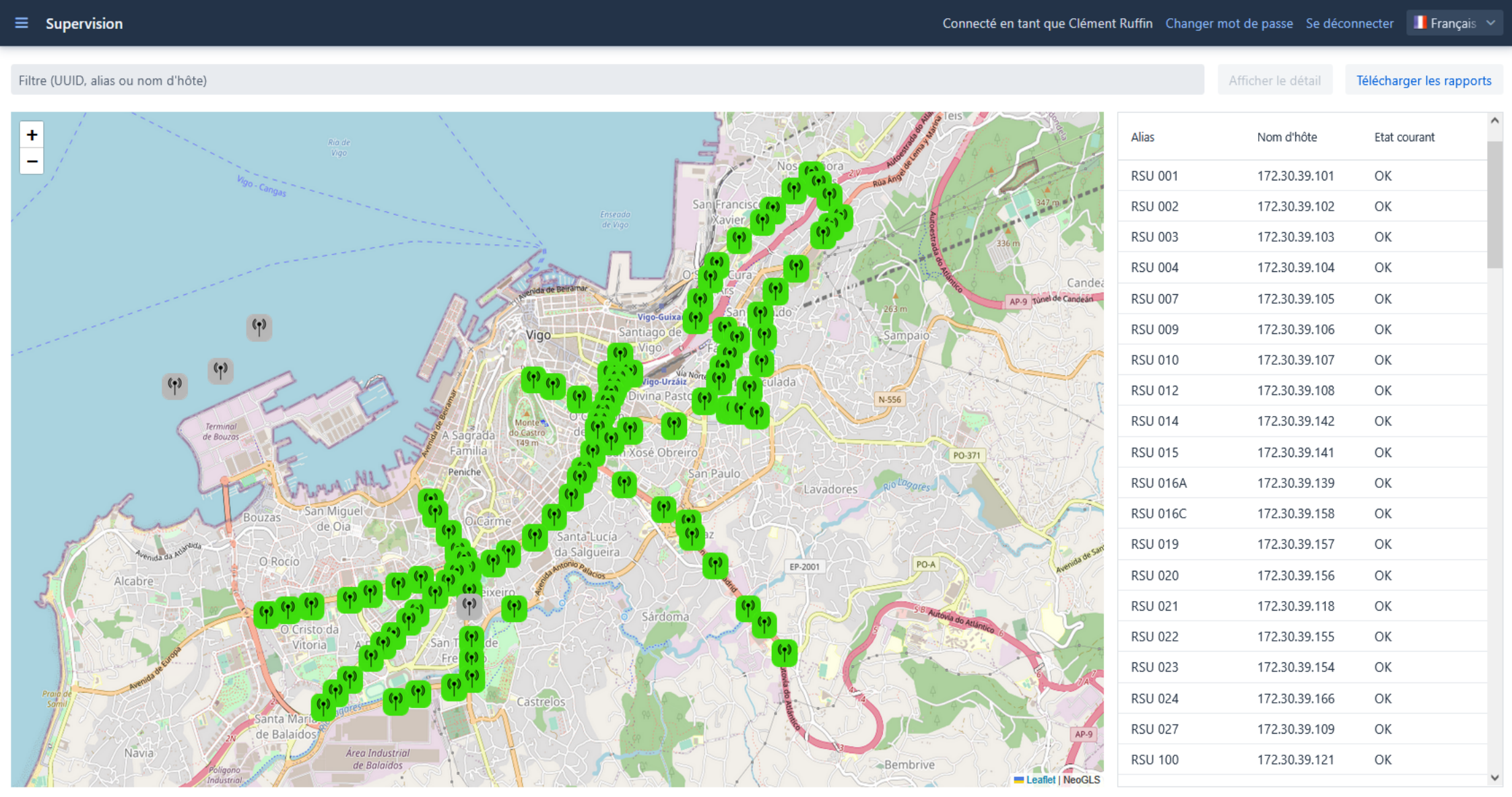
The V2X station management option includes all the features associated with ITS stations, allowing you to take full advantage of them.
- Configuration : Each station can be configured, individually or not, to meet your specific needs.
- Update deployment : The platform allows for automatic deployment of updates across the entire ITS station fleet in just a few clicks.
- Log access : The platform allows you to activate, view, and download logs associated with the stations, which are useful for research and analysis purposes.
- Monitoring : Each deployed station is constantly monitored. The platform performs this monitoring and displays the detailed status of each station. Email alerts can also be configured in the event of an error on one or more ITS stations.
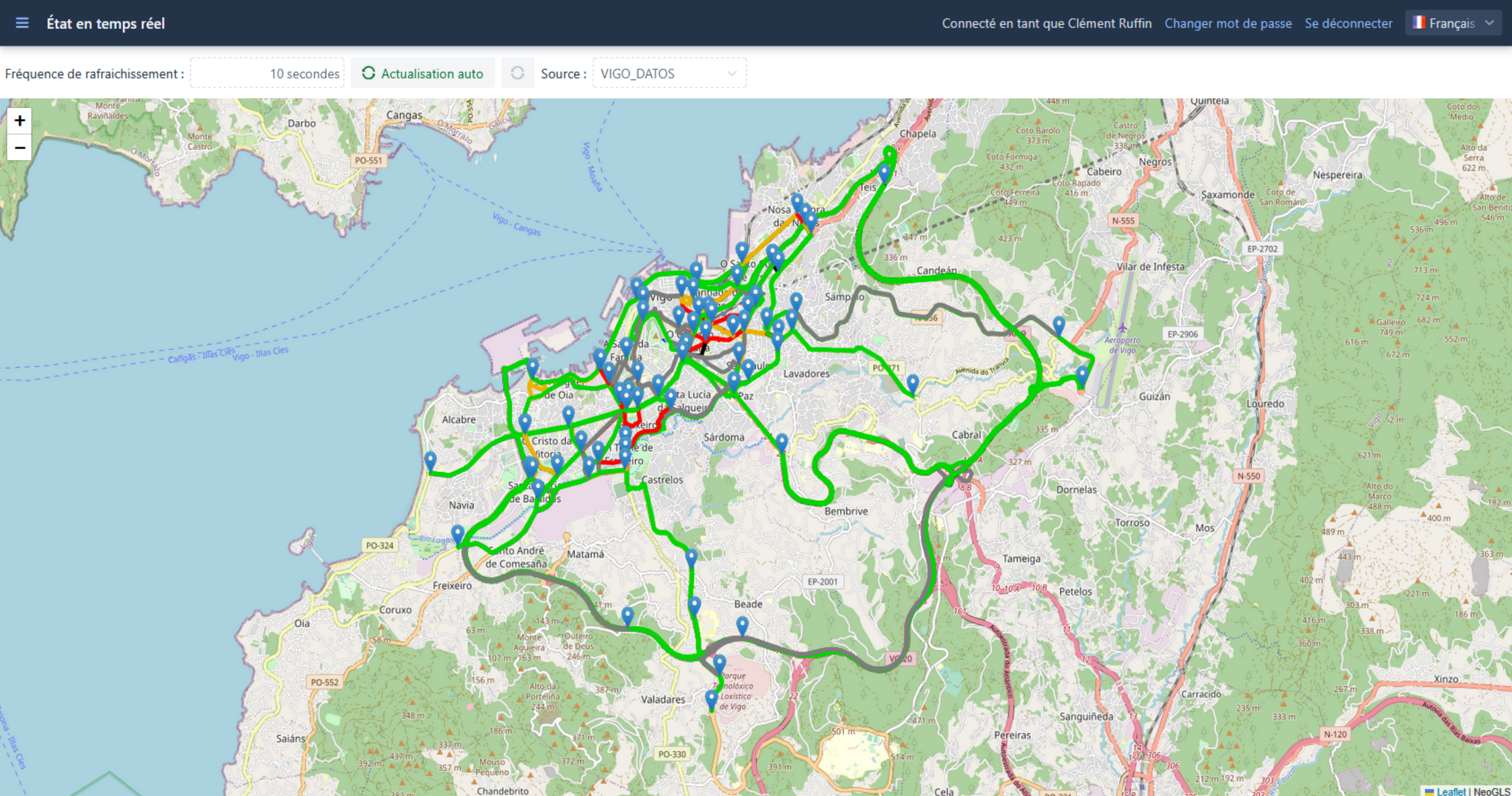
- Bluetooth travel times : RSUs equipped with the Bluetooth antenna option can be used to calculate travel times on the road network covered by the RSUs. The V2X licence includes the functionality to calculate and display travel times.
- Real-time display and manual event triggering : The platform allows for the visualisation of V2X data in real time and the ad hoc triggering of ITS messages. Users are using this feature for testing purposes. We recommend that users use the “Intersections,” “Priority,” or “Road Data Management” licences to automatically trigger ITS messages.
« intersections » package
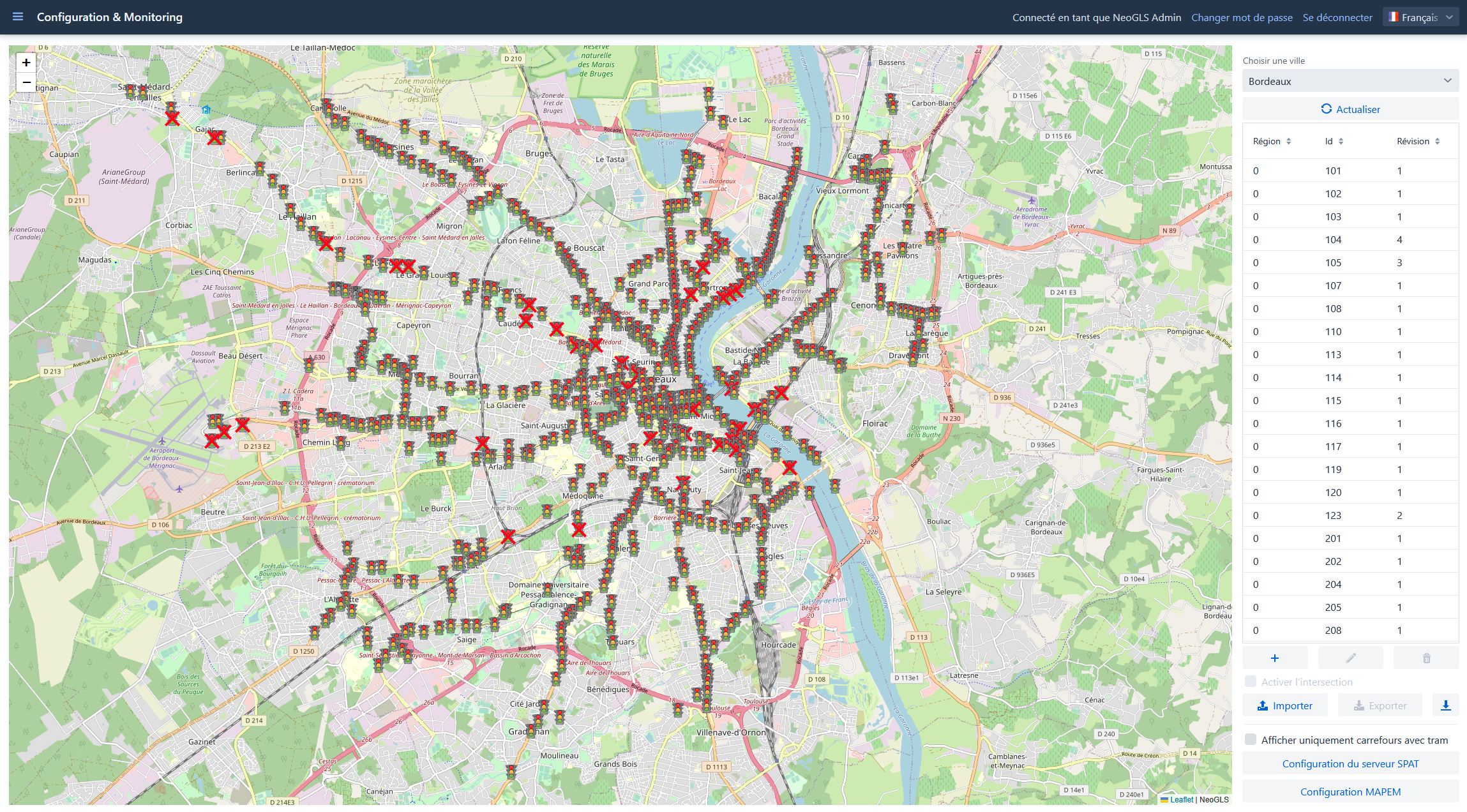
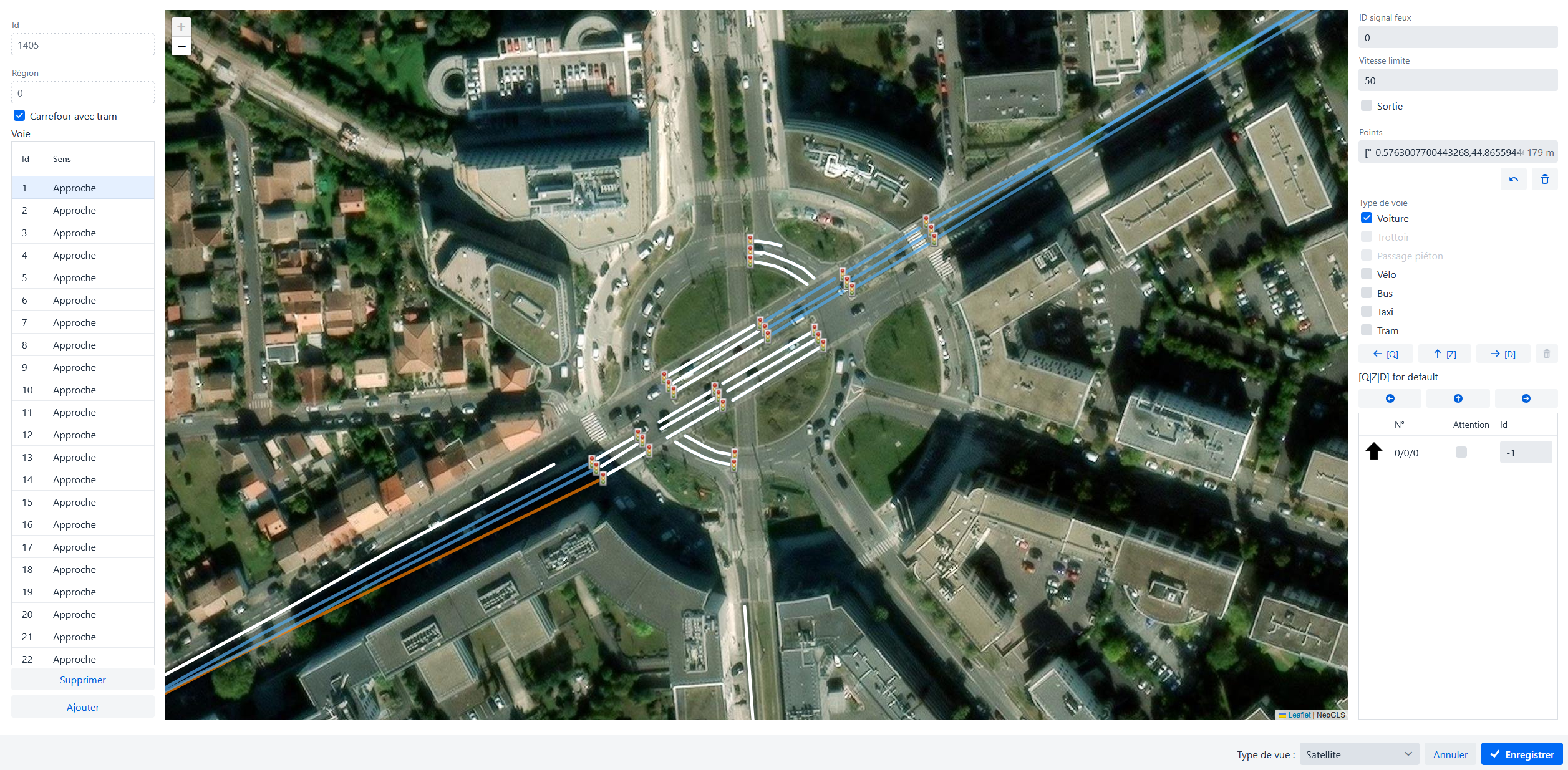
This package allows the configuration of intersection-related use cases, such as GLOSA. It includes intersection configuration. This involves graphically entering them on a form containing satellite mapping and facilitating the MAPEM standardisation of map data.
This license also allows the retrieval of intersections in various formats for external use.
We also monitor intersections. In addition, we check the connection to the traffic light controller 24/7 to ensure the proper functioning of the GLOSA use case.
«priority» package
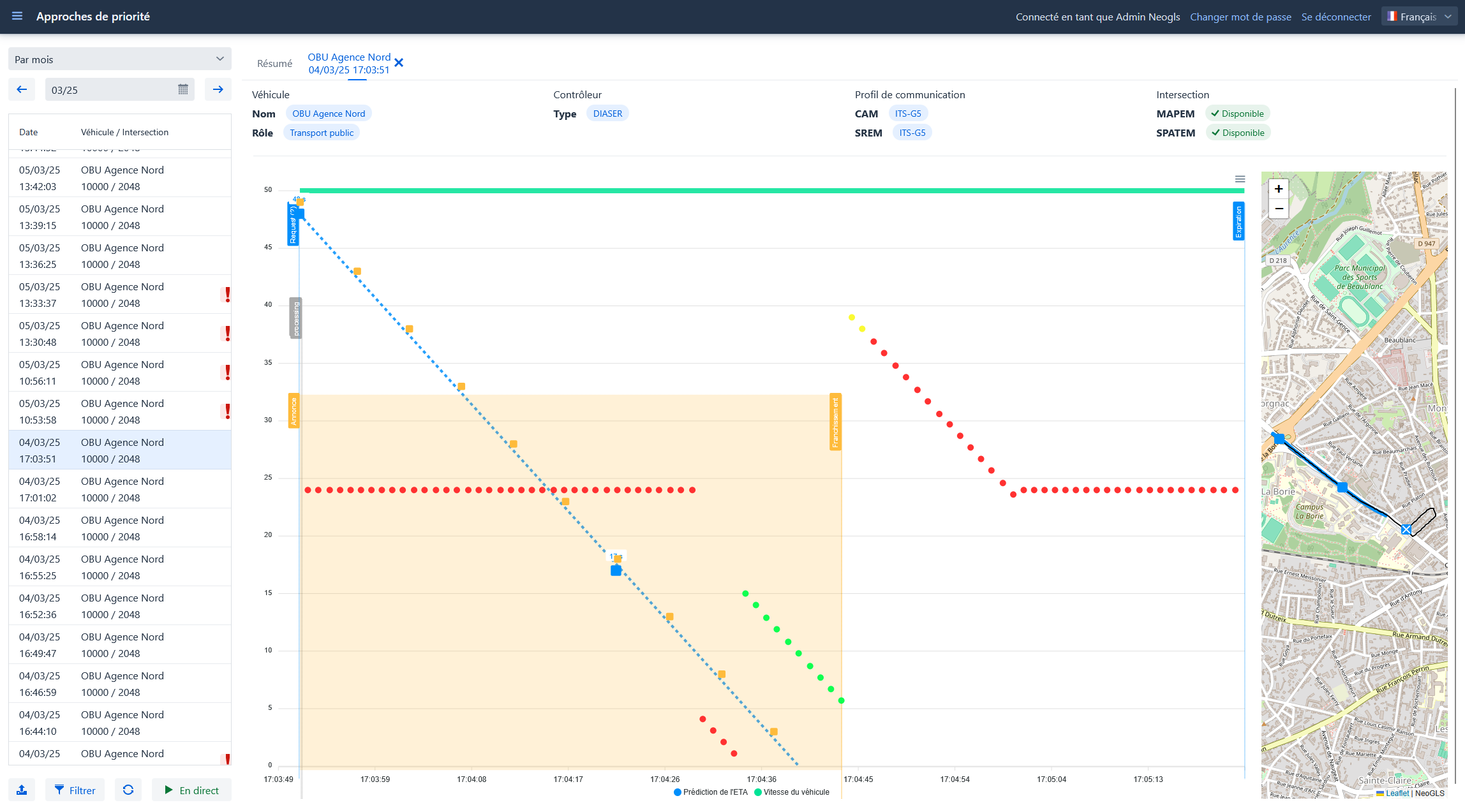
This package allows configuration of the traffic light priority use case. It requires the “intersections” package. It provides access to features for configuring priority routes, as well as the processing and analysis of priority logs, allowing for viewing of system usage statistics.
Finally, it provides access to the advanced priority traffic analysis interface, allowing for tracking traffic on a case-by-case basis and adjusting settings if necessary.
«roads data» package
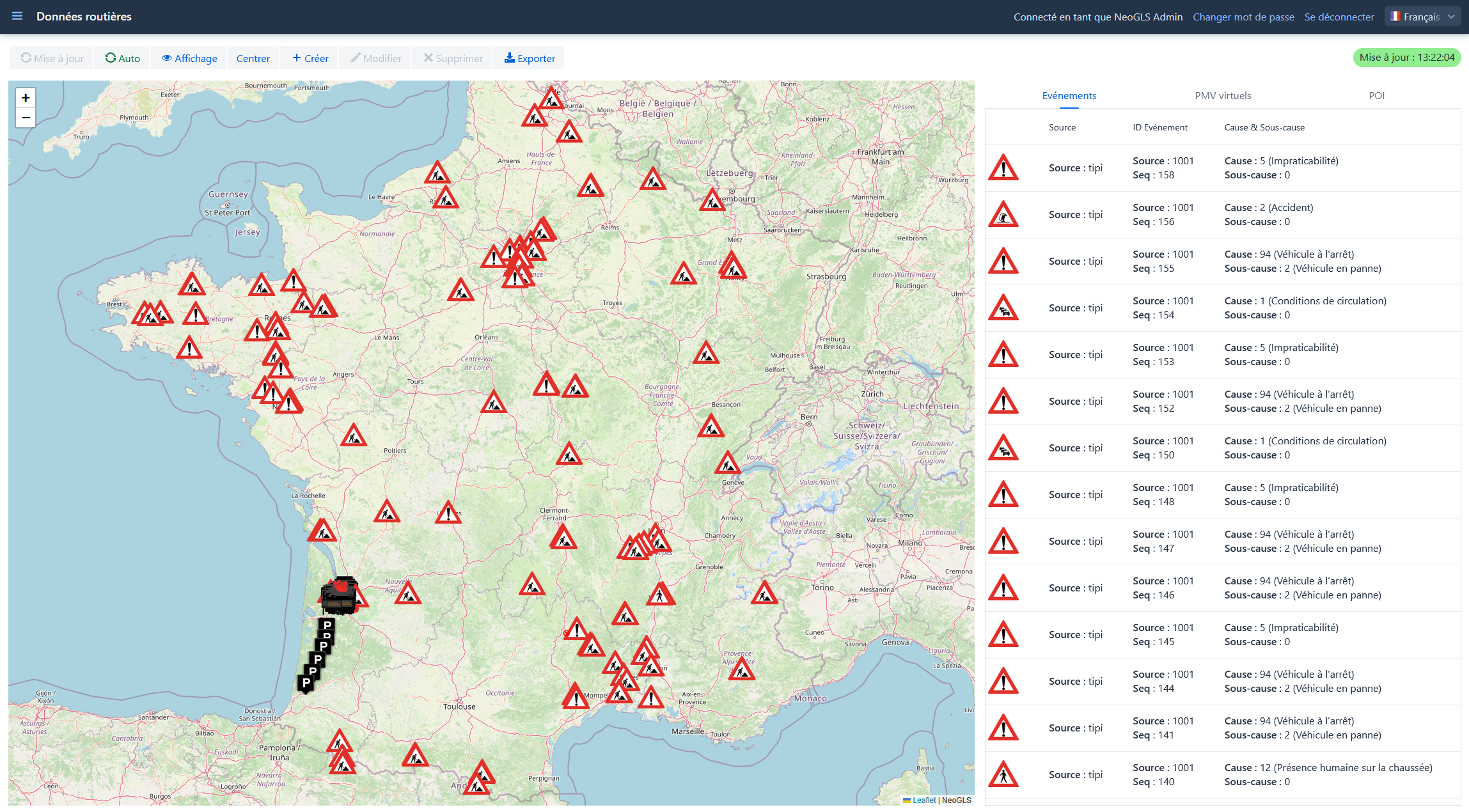
This package provides access to the platform’s ITS data manager. This tool allows DENM, IVIM, POI, CPM, MAP, SPAT, SREM, and SSEM messages to be created centrally and reliably. Users can only manually trigger ITS stations to a limited way. With this pack, it is possible to create scenarios containing a large number of ITS messages, trigger them automatically, and schedule them. The system stores each message created so that it can be recreated in the event of a technical problem (unexpected restart of the RSU or the platform).
A history of each DENM, IVIM and POIM message created is also available for consultation on the platform’s GUI.
« app » package
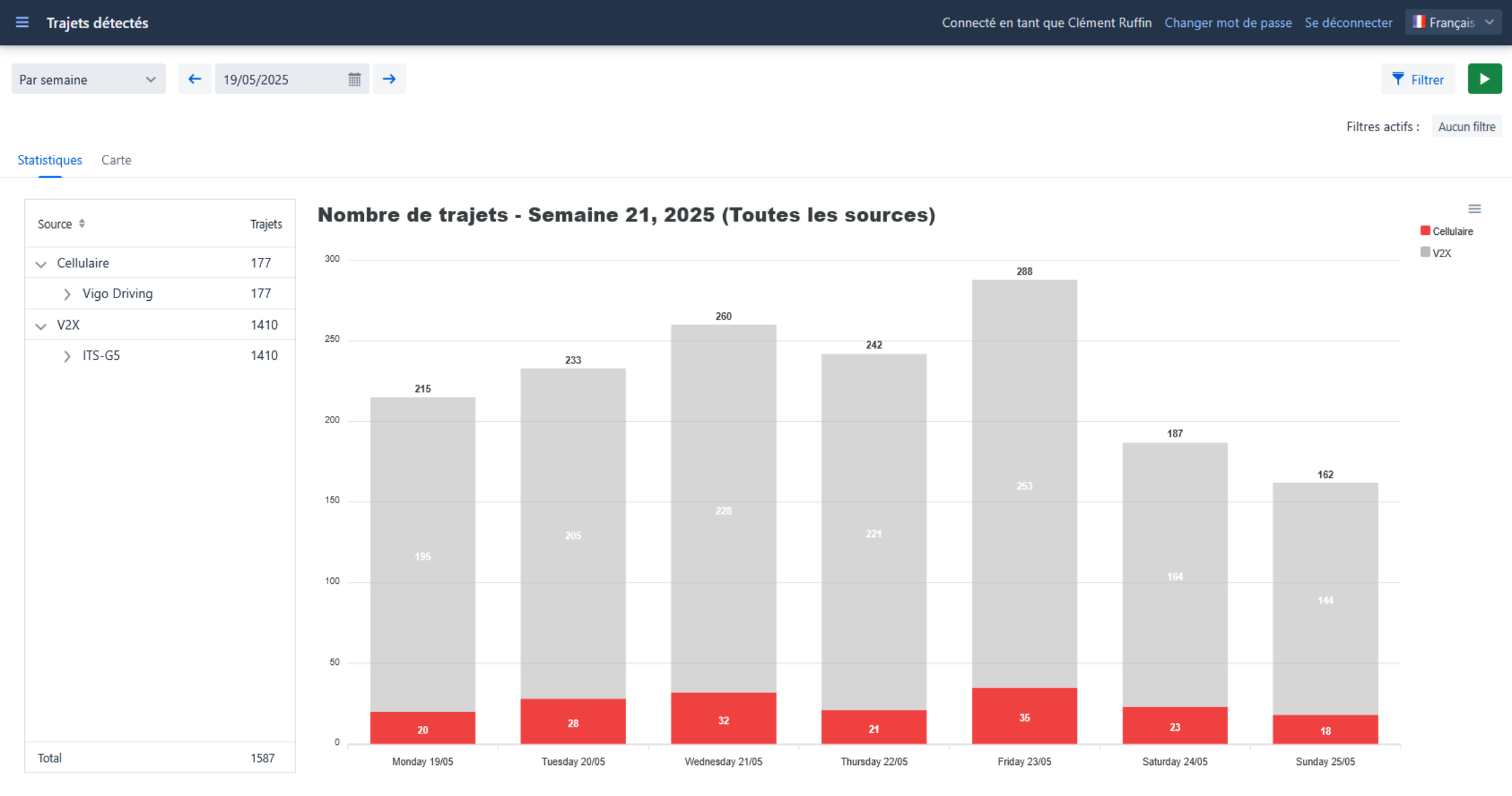
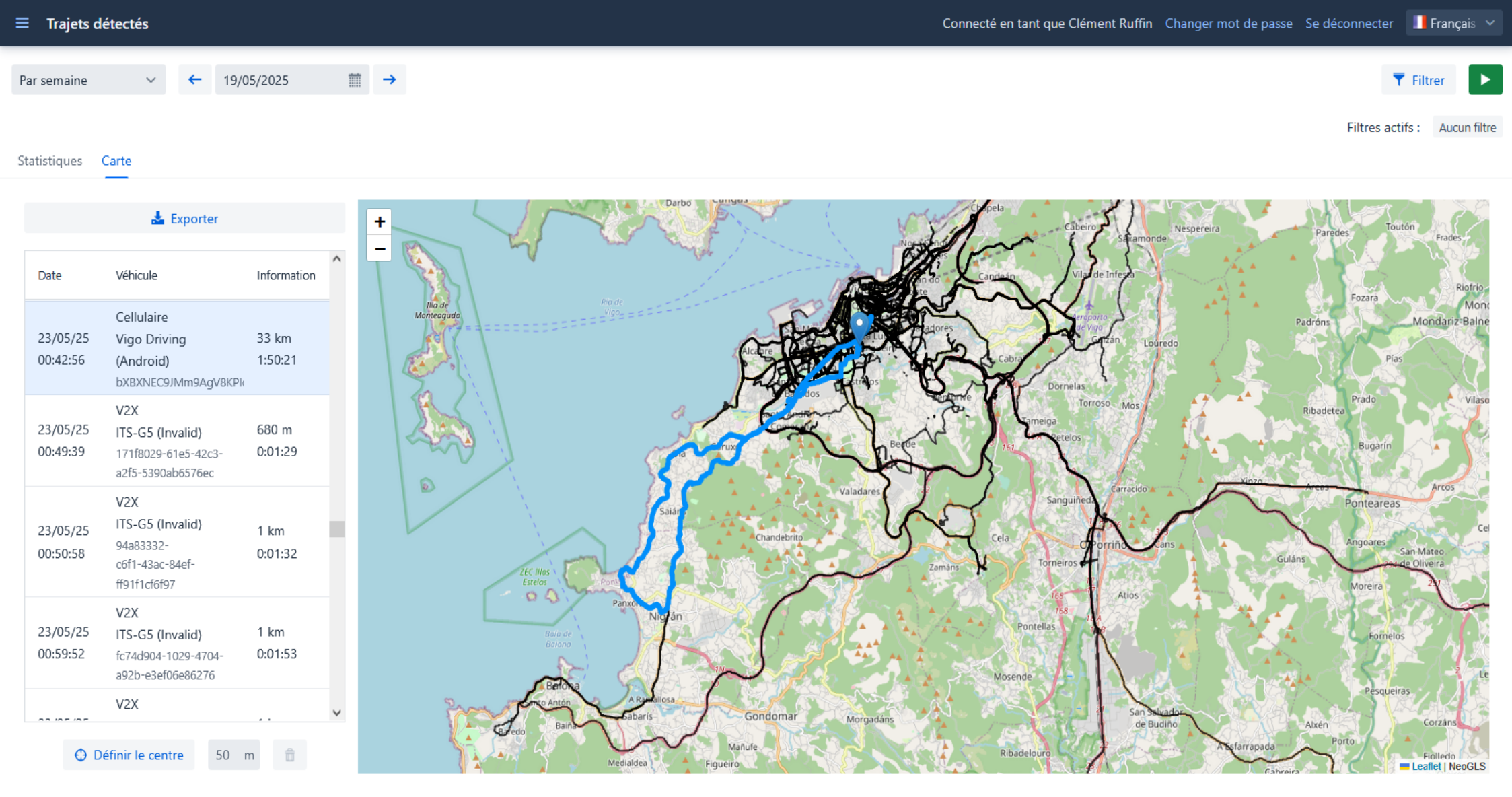
This package provides access to usage statistics for the deployed cellular application. It is used in addition to a consumer or non-consumer application deployment, and aims to understand the use made of the application by consulting the journeys made, and the current times of use.
